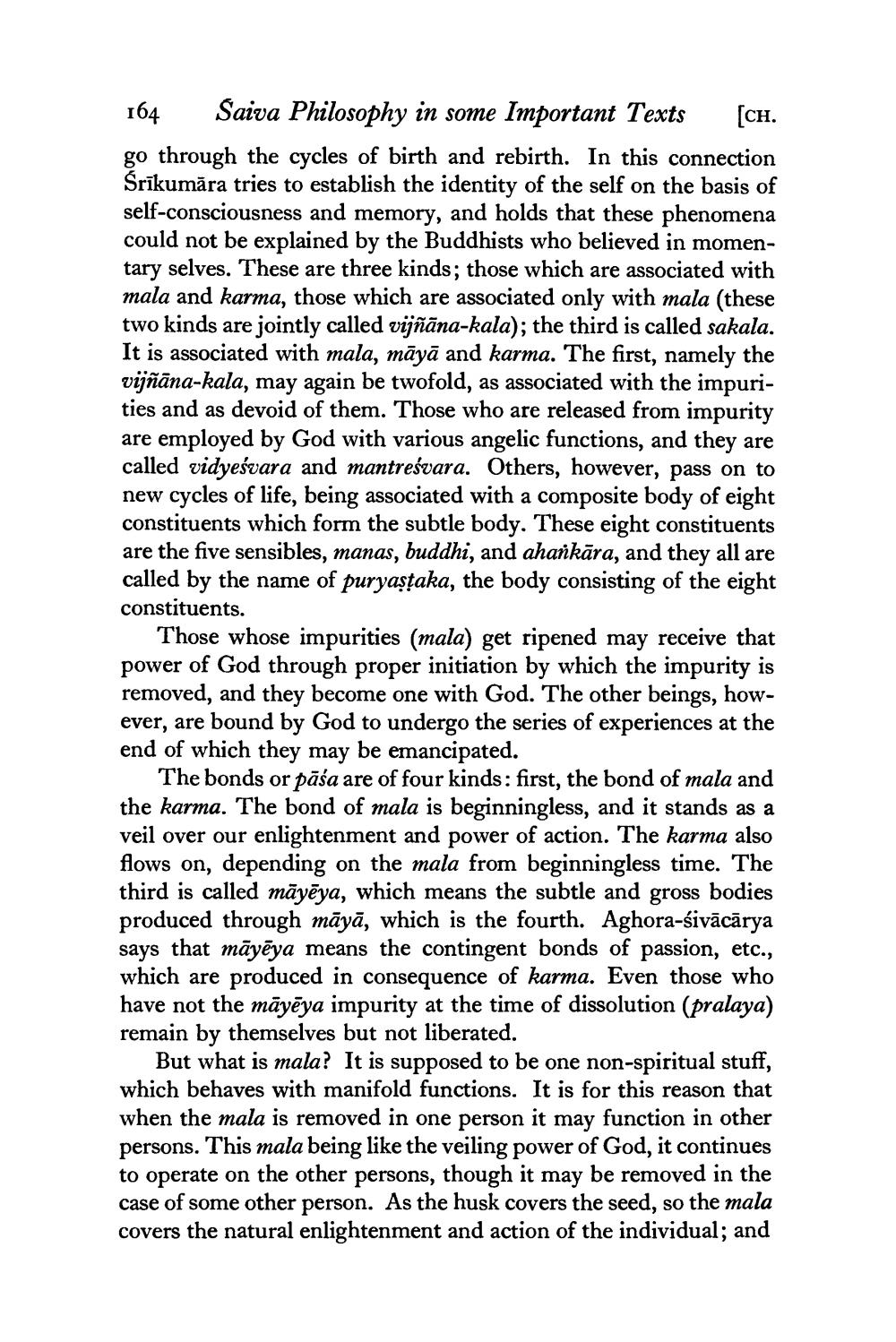________________
164 Saiva Philosophy in some Important Texts [CH. go through the cycles of birth and rebirth. In this connection Śrīkumāra tries to establish the identity of the self on the basis of self-consciousness and memory, and holds that these phenomena could not be explained by the Buddhists who believed in momentary selves. These are three kinds; those which are associated with mala and karma, those which are associated only with mala (these two kinds are jointly called vijñāna-kala); the third is called sakala. It is associated with mala, māyā and karma. The first, namely the vijñāna-kala, may again be twofold, as associated with the impurities and as devoid of them. Those who are released from impurity are employed by God with various angelic functions, and they are called vidyeśvara and mantreśvara. Others, however, pass on to new cycles of life, being associated with a composite body of eight constituents which form the subtle body. These eight constituents are the five sensibles, manas, buddhi, and ahankāra, and they all are called by the name of puryaştaka, the body consisting of the eight constituents.
Those whose impurities (mala) get ripened may receive that power of God through proper initiation by which the impurity is removed, and they become one with God. The other beings, however, are bound by God to undergo the series of experiences at the end of which they may be emancipated.
The bonds or pāśa are of four kinds: first, the bond of mala and the karma. The bond of mala is beginningless, and it stands as a veil over our enlightenment and power of action. The karma also flows on, depending on the mala from beginningless time. The third is called māyāya, which means the subtle and gross bodies produced through māyā, which is the fourth. Aghora-śivācārya says that māyễya means the contingent bonds of passion, etc., which are produced in consequence of karma. Even those who have not the māyĒya impurity at the time of dissolution (pralaya) remain by themselves but not liberated.
But what is mala? It is supposed to be one non-spiritual stuff, which behaves with manifold functions. It is for this reason that when the mala is removed in one person it may function in other persons. This mala being like the veiling power of God, it continues to operate on the other persons, though it may be removed in the case of some other person. As the husk covers the seed, so the mala covers the natural enlightenment and action of the individual; and




